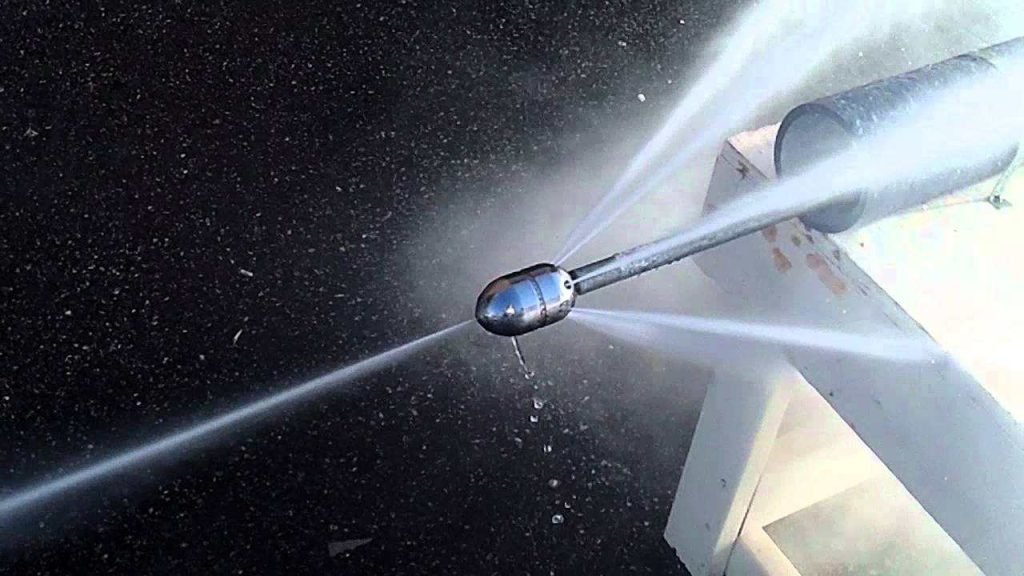In the bustling city of Alhambra, California, where urban living meets environmental consciousness, the debate over various cleaning and maintenance methods has intensified. One such method that has gained prominence in recent years is hydro jetting, a powerful technique used for cleaning pipelines, drains, and sewer systems. While hydro jetting offers numerous benefits, including its effectiveness in clearing blockages and preventing corrosion, its environmental impact has sparked concerns. In this article, Pro Plumbing will help you explore the environmental implications of hydro jetting in Alhambra, weighing the pros and cons of this practice.

Understanding Hydro Jetting
Before delving into its environmental impact, let’s grasp the fundamentals of hydro jetting. Hydro jetting is a technique that employs high-pressure water streams to clean and clear clogged pipelines and sewer systems. This method utilizes water pressure of up to 4000 PSI (pounds per square inch) to remove debris, grease, and other obstructions from pipes, ensuring that water flows freely through the system.
II. The Pros of Hydro Jetting
- Eco-Friendly Cleaning: Hydro jetting relies solely on water, making it an environmentally friendly option compared to chemical cleaners that release harmful substances into the environment.
- Prevents Pollution: By effectively removing blockages, hydro jetting prevents sewage backups that can lead to harmful pollutants entering local water bodies.
- Prolongs Pipe Life: Hydro jetting can extend the lifespan of pipes by removing corrosive materials and preventing future clogs.
III. The Cons of Hydro Jetting
- High Water Consumption: Hydro jetting requires significant water volumes, which may strain local water resources in areas prone to drought, like California.
- Energy Usage: The equipment used in hydro jetting consumes energy to generate the necessary pressure, contributing to the city’s overall energy consumption.
- Potential Damage: Inexperienced operators or excessive pressure can damage pipes, leading to leaks and further environmental issues.
Balancing Act:
Regulations and Best Practices
To mitigate the environmental impact of hydro jetting in Alhambra, it is crucial to establish regulations and promote best practices. Look out for early signs for your drain needing hydro-jetting. Local authorities can mandate water-efficient equipment and require operators to undergo training to prevent excessive pressure or damage to pipes. Additionally, promoting responsible water usage and conservation can help offset the high water consumption associated with hydro jetting.
Sustainable Alternatives
Exploring sustainable alternatives is essential in reducing the environmental footprint of sewer maintenance. Alhambra can invest in research and development to find cleaner, greener technologies that achieve similar results. Some potential alternatives include robotic cleaning systems and trenchless repair methods, which minimize disruption and resource consumption.
Environmental Impact Assessment
To comprehensively understand the environmental impact of hydro jetting in Alhambra, it’s crucial to conduct a thorough assessment. This involves analyzing factors such as water consumption, energy usage, and the release of greenhouse gases during the process. By quantifying these impacts, local authorities can make informed decisions about the continued use of hydro jetting and identify areas for improvement.
Water Resource Management
Alhambra’s water resources are a precious commodity, especially in drought-prone regions of California. Effective water resource management is essential to address the high water consumption associated with hydro jetting. The city can implement water-saving measures, such as water recycling and rainwater harvesting, to offset the water usage in this process. Additionally, fostering public awareness about responsible water usage can contribute to sustainable water management practices.
Energy Efficiency Initiatives
Reducing the energy consumption associated with hydro jetting is another key aspect of minimizing its environmental impact. Alhambra can invest in energy-efficient equipment and explore renewable energy sources, such as solar or wind power, to power the hydro jetting equipment. Furthermore, optimizing maintenance schedules and reducing idle times can help lower overall energy usage in the city’s sewer and pipeline maintenance operations.
Public Education and Engagement
Engaging the community in discussions about hydro jetting services and its environmental impact is vital. Public education campaigns can raise awareness about the importance of responsible sewer maintenance and the role residents can play in conserving water and energy. Community involvement can lead to more sustainable practices, such as proper disposal of waste and the adoption of eco-friendly habits, which collectively contribute to a greener Alhambra.
By addressing these additional aspects and considering potential solutions, Alhambra can develop a holistic approach to managing the environmental impact of hydro jetting while ensuring the efficient operation of its sewer and pipeline systems. Balancing environmental responsibility with infrastructure maintenance is a complex challenge, but with concerted efforts, Alhambra can continue to be a model of urban sustainability in California.
FAQs:
What is hydro jetting?
Hydro jetting is a sewer and pipeline cleaning method that uses high-pressure water streams to remove obstructions, debris, and buildup from the inside of pipes.
How is hydro jetting done?
Hydro jetting is performed by inserting a specialized nozzle into the pipe, which releases pressurized water at up to 4000 PSI, effectively clearing blockages and cleaning the interior surfaces.
How does a water Jetter work?
A water Jetter works by using a pump to pressurize water and propel it through a hose to the cleaning nozzle, which directs the high-pressure water stream into the pipe, dislodging and flushing away contaminants and blockages.
Conclusion
In conclusion, hydro jetting and the science behind hydro jetting plays a crucial role in maintaining Alhambra’s sewer and pipeline systems. While it offers several environmental benefits, such as preventing pollution and extending pipe life, it also poses challenges in terms of water consumption and energy usage. To strike a balance, the city should implement regulations, promote best practices, and explore sustainable alternatives to mitigate the environmental impact of hydro jetting. By doing so, Alhambra can continue to thrive as an environmentally conscious community while maintaining its critical infrastructure. Balancing progress and sustainability is the key to preserving the city’s charm and protecting its natural resources.

